wrestling / Columns
The 8-Ball 12.15.12: Most Important Wrestling Lawsuits
Welcome, ladies and gentlemen, to the 8-Ball. As you should know by this point, I am your party host, Ryan Byers, and I am here to act as your docent in what is a veritable a museum of professional wrestling history . . . that is, if museums were text-and-photo lists of eight items arranged in order of preference.
With that said, let’s head to the list.

One of the things that is often overlooked by professional wrestling fans is that, no matter how much you may get wrapped up in storylines or how much you may care for a particular piece of talent, professional wrestling at the end of the day isn’t about entertaining you or making sure that the most talented performers get their day in the spotlight. Professional wrestling is a business, and it’s all about making cold, hard cash for the people who are promoting it.
And, as anybody who has ever run a business will tell you, putting up your own shingle means that, most likely, you are at some point going to have to have a brush with the legal system. Though it’s one of the less pleasant aspects of trying to run your own business, companies sue and get sued all the time, and any industry with over a century of existence and billions of dollars generated is going to have more than its fair share of interesting stories about lawsuits. Professional wrestling is no exception, and some of those suits have even managed to have significant impacts on the subsequent course of the business.
This week, we’re taking a look at eight of those court cases, the eight that I consider to be the most important in the history of modern professional wrestling.

If you’re a professional wrestling fan and you’ve been on the internet for any length of time, you’ve seen this video from December 28, 1984, in which World Wrestling Federation wrestler “Dr. D” David Shultz slaps 20/20‘s John Stossel (currently part of the Fox News family) across the face when Stossel has the gall to ask Schultz whether pro wrestling match outcomes are predetermined, a fact that had already been known to the general population for decades. Virtually every wrestling fan out there knows the story behind the slap, but not nearly as many people realize that the assault lead to a civil lawsuit filed by John Stossel against the World Wrestling Federation, alleging that he had difficulty with his hearing after being smacked upside the head. The outcome was that the Fed paid Stossel approximately $425,000.00 to settle the matter out of court. Why was this important for professional wrestling? First of all, it was incredibly high profile, as the WWF rarely at this time had such interaction with a member of the mainstream media. Second, even though some cite to his personal problems with Mr. T as the real cause, this incident no doubt played a large part in Schulz’s dismissal from the World Wrestling Federation, which in turn killed his professional wrestling career dead just a couple of years later. He was a main event level heel in the largest promotion in the United States before the Stossel incident/lawsuit and had all the talent and potential to remain in that slot for years to come . . . meaning this lawsuit probably helped to kill a promising wrestling career. Interestingly, Stossel has since become one of the most outspoken critics of personal injury lawyers and tort suits in the nation, meaning that he now either regrets filing the suit or that he is one of the biggest hypocrites on the planet.
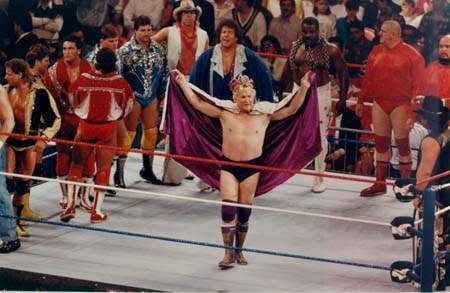
Most fans know that Jerry “The King” Lawler is no stranger to the legal system, as a prosecution for alleged sexual abuse of a minor (allegations which turned out to be false) infamously kept Lawler out of one of the top matches of the 1993 WWF Survivor Series. However, a less often-repeated story goes back several years before the King became a member of the WWF roster, and it is a somewhat surprising tale in light of the fact that Lawler has now been employed by Vince McMahon’s company for almost twenty years. You see, on May 20, 1987, Jerry “The King” Lawler filed a lawsuit against the World Wrestling Federation. The Fed, which was still in the relatively early days of its national expansion, ran a show in Lawler’s home territory of Memphis and promoted the show as featuring a match with “The King.” The King in question was not Lawler but rather Harley Race, who the WWF had been promoting as the king of professional wrestling for some time, though not nearly as long as Jerry had his crown. This bothered Lawler, who felt that this was an intentional effort to confuse fans into thinking that he was appearing for a rival company, since he was so closely associated with the King moniker in the State of Tennessee. He filed suit and, despite the solid reputation of the WWF legal team, Lawler actually wound up on top, and the Fed was prevented from using its “King” gimmick when they came through Memphis. Some have speculated that Lawler having the balls to stand up against the mighty World Wrestling Federation endeared the King of Memphis to Vince McMahon, which was part of him getting a job offer from the WWF several years later when his home territory was dying out.
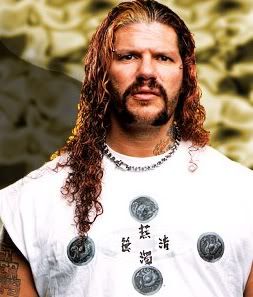
Sometimes, a lawsuit that everybody thinks will be a big one turns out to be nothing more than a footnote in history. That’s what happened here . . . but it still makes the list for being the only real, legitimate attempt to get one of the biggest legal issues that exists in wrestling before a court. The year was 2008, and the trio of Scott “Raven” Levy, Chris Kanyon, and “Above Average” Mike Sanders filed a lawsuit against the World Wrestling Federation. In addition to filing on their own behalf, they attempted to organize a class action suit that, theoretically, could have included any number of professional wrestlers that had worked for the WWF/WWE for several years prior to filing. The lawsuit alleged that WWE owed Raven, Kanyon, and Sanders thousands of dollars because it did not pay them certain benefits while they were working with the company. These monies represented benefits that the trio would have been entitled to if they were “employees” of WWE as opposed to “independent contractors,” which is the official classification that WWE uses for its in-ring talent. WWE and other national wrestling promotions classifying their grapplers as independent contractors is a longstanding practice, and it is one that saves them quite a bit of money because it prevents them from having to provide things like health insurance. However, this is also a classification scheme that many people with legal backgrounds consider to be highly suspect. Unfortunately for the three wrestlers who filed the lawsuit, it was dismissed due to the statute of limitations. The court did not determine whether the substance of the wrestlers’ claims had merit, but instead the suit was thrown out because the court determined that it was not filed within the required amount of time after the wrestlers’ employment with WWE had come to an end. It will be interesting to see whether another group of former WWE employees, who do not have the same statute of limitations issues with their case, attempt to raise this issue again . . . because it could potentially go somwehre.

Professional wrestling has a long and unfortunate history with racial issues. There are very few instances in the sport’s annuls in which the topic of race has come up and it has been handled in a manner that is actually dignified or appropriate. You would think that by the late 1990s many of these issues would have been addressed, but apparently that was not the case, as there was still enough out there to allow several employees of World Championship Wrestling to sue the company for racial discrimination. They wound up receiving what was reportedly a large settlement (though exact numbers are not available), in part due to the strength of their claims and in part due to their timing. Former manager Sonny Onoo and preliminary wrestlers Hardbody Harrison and “Hardwork” Bobby Walker were all involved as plaintiffs, with their allegations including a disparity in pay between white and non-white wrestlers, fewer merchandising opportunities for minority wrestlers, and constant negative portrayal of minority wrestlers in storylines. In interviews around the time, Onoo also lashed out at some decidedly non-P.C. comments that Vince Russo made about Mexican and Japanese performers while he was head booker, while Hardbody Harrison went as far as claiming that he felt like he was “sold into slavery” while working for WCW. In the end, the lawsuit dragged on for several years, well after WCW closed its doors and sold its assets to the WWF. (The lawsuit continued against a subsidiary of AOL Time Warner which had basically been established for the sole purpose of winding down WCW’s final affairs.) Eventually, as noted above, the settlement was offered and the litigation was brought to an end.
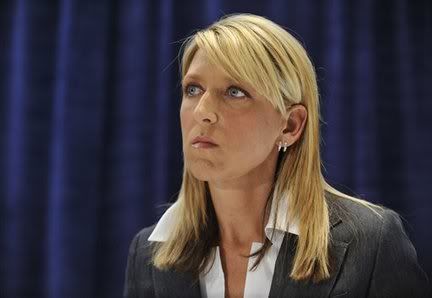
The death of Owen Hart on a live World Wrestling Federation pay per view event is one of the most tragic things to ever occur in professional wrestling. Period. I almost feel guilty for discussing it on a list like this but, for the sake of completeness, I feel that it has to be included. Owen’s passing had many repercussions, one of which was a very large lawsuit filed by his widow, Martha Hart, against a variety of defendants connected to the accident that took her husband’s life. The World Wrestling Federation was among the entities sued, as were the manufacturers of the harness that Owen was using in the stunt that went horribly wrong and even the City of Kansas City, Missouri, which was (and still is) the owner of Kemper Arena, where the accident occurred. The suit involved what may be the largest financial settlement ever in wrestling-related court case, with the Federation paying $18 million that was divided amongst Martha Hart, Helen and Stu Hart, and trusts for the benefit of Owen’s two children. However, after receiving payments from their liability insurance companies, the WWF only paid about $7 million out of pocket, and the amount of money that they were ultimately out may have even been less, because they maintained their own suits against the harness manufacturers and other parties for reimbursement of monies that they had to pay the Harts. (Unfortunately, I am not certain of the results of these claims by the WWF.) If there is a silver lining to this cloud, it is that Martha did use a substantial portion of the settlement monies to establish the Owen Hart Foundation, which is still an active charitable organization and administers programs such as college scholarships and housing assistance for low income individuals.
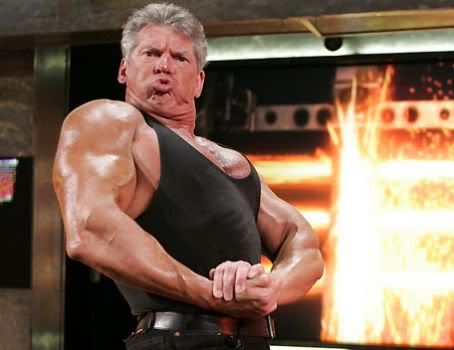
In late 1993, Vincent Kennedy McMahon, by then the single most powerful individual in professional wrestling – a title that he has arguably maintained continuously until present day – was almost knocked off his throne by an indictment in proceedings initiated by none other than the United States government. Federal prosecutors alleged that McMahon, along with Dr. George Zahorian, the World Wrestling Federation as a corporate entity, and others had participated in a conspiracy to distribute steroids throughout the WWF locker room. After the indictment, the matter proceeded to a full-on criminal trial, the results of which would almost definitely have included prison time for Vince were he convicted. This essentially took McMahon away with his duties with the WWF for the better part of a year, which is a big impact in and of itself. McMahon peer Jerry Jarrett assumed the day-to-day operations of the WWF, and there were rumors that the company’s contingency plan was for Jarrett to continue in that role indefinitely if Vince were sent to the slammer. Fortunately for Vince and the Federation as a whole, McMahon as acquitted of all charges. There are two witnesses who were called by the government that are most often cited to as the reasons that things did not go the way prosecutors may have hoped. The first was the wrestler who used to compete in the WWF as Nailz, who basically said everything that the feds wanted him to in terms of alleging that Vince McMahon told him to use steroids and provided him with opportunities to receive the drugs. However, though he said the “right things,” Nailz said them in the wrong way, as he came off as a man who had a personal vendetta against McMahon and would say just about anything in order to see him punished. The second witness credited with saving Vince’s hide was none other than Hulk Hogan, who received immunity from prosecution in exchange for testifying on behalf of the government . . . but then said virtually nothing that the government was hoping that he would say in support of their case. The Hulkster testified that he and others in the WWF had used steroids but that Vince McMahon neither encouraged the practice nor sold the drugs. In other words, though there may have been some illegal acts occurring, Vince McMahon had nothing to do with them. Yes, Vince’s name was cleared in the end, but it is amazing just how close he wound up to being a convicted felon, which could have radically altered the history of professional wrestling, most likely for the worse.
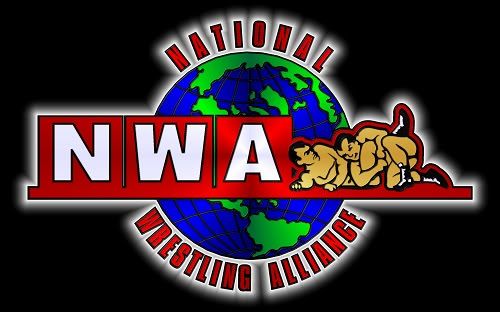
Vince McMahon’s prosecution wasn’t the only time that the United States government decided to file a lawsuit against a professional wrestling company. In fact, over thirty years earlier, the feds went after one of the WWF’s biggest competitors, the National Wrestling Alliance. Specifically, in the mid-1950’s, the United States of America filed an antitrust lawsuit against the NWA. The suit alleged that the NWA constituted an unlawful monopoly on the professional wrestling industry, as the various member territories of the Alliance cooperated in order to single-handedly control the booking of professional wrestlers through the country and, furthermore, to prevent any company that was not a National Wrestling Alliance member from running wrestling shows in the geographic territories that had been assigned to specific National Wrestling Alliance members. The funny thing is that, though these things were described as violations of federal law by the United States government forty-five years ago, at the time promoters largely considered them to be acceptable business practices and the main reasons that they joined the NWA in the first place. The powers that be in the NWA apparently realized that they were screwed, because, not long at all after the suit was originally filed, the Alliance entered into a consent decree with the government, basically agreeing to take certain action that the United States felt would be sufficient to break up the alleged wrestling monopoly. The restrictions placed upon the NWA were numerous, but they were mainly prohibited from: 1) denying wrestling promoters from joining the Alliance so long as they were “financially responsible;” 2) recognizing promotions as the only promotion who would be able to run shows within particular geographic territories; and 3) blackballing wrestlers or promoters for violating Alliance rules. Whether the NWA followed the decree to the letter is somewhat questionable, but the fact of the matter is that the consent decree was sufficient to get the federal government off of their back, allowing the Alliance to be a powerhouse in the professional wrestling world until the early 1990s.
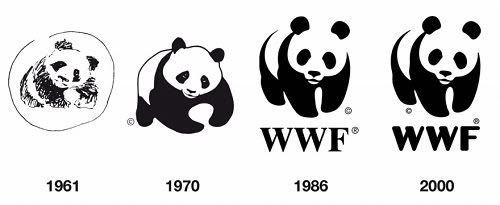
And here it is, the most important lawsuit in professional wrestling history in your humble author’s opinion. In one corner, as is the case with most of the lawsuits on this list, is the World Wrestling Federation. In the other corner, as you probably expected, is the World Wildlife Fund. This is the legal action that changed a major, albeit somewhat superficial, portion of the professional wrestling landscape, as it forced the WWF to become WWE and forced a whole hell of a lot of blurring in archival footage, two changes that are likely to be permanent. I remember that, in the early 2000’s, when this suit was filed and the decision came down, wrestling fans on the internet were very angry at the World Wildlife Fund, blaming them for needlessly interfering with the Fed’s affairs. However, I disagreed with that opinion at the time, and I still do today. This isn’t cause to be mad at the World Wildlife Fund, because this is a situation in which the World Wrestling Federation made its own bed and should have been forced to sleep in it. You see, back in the early 1990s, the Federation was expanding further into Europe and other foreign markets more heavily than it ever had before. The Wildlife Fund, which was more established abroad than it was in the United States, did not want the two WWFs to be confused and approached the Fed about the issue. The result was a completely voluntary agreement in which the wrestling company agreed to limit its use of the “WWF” acronym and certain logos in markets where the Wildlife Fund was well-established.
Do you know what Vince McMahon’s company did with that agreement? If you guessed, “They started completely ignoring it the second that it became less-than-convenient for them,” you would be 110% correct. The Federation unabashedly used the WWF initials on a global basis, particularly on the good ole’ World Wide Web, where its URL was none other than wwf.com. It was the flagrant, disrespectful violation of the prior agreement – basically McMahon and his flunkies completely welching on their word – that resulted in the Wildlife Fund taking them to court in London, England in order to get some relief. And what relief they got! The Fed was ordered to adhere to the terms of the original agreement. In order to do so, the WWF felt that a whole scale rebranding was necessary . . . leaving us with the professional wrestling company that we all now know and love.
That’s it for this week’s 8-Ball. If you can’t get enough of Ryan, follow him on Twitter here.
More Trending Stories
- More Details On Incarceration Of Man Suing WWE & AEW For Plagiarism
- Update on Life for Vince McMahon Post-WWE, Maintaining Contact With Donald Trump, WWE Employees Less Fearful Now
- Eric Bischoff Praises Kenny Omega, Thinks AEW Made Mistake With Mercedes Mone
- More Details on Injured Shoulder for Rhea Ripley, Relinquishing Title







